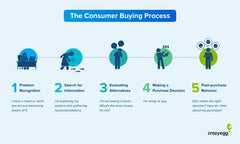DFI Retail Group Achieves Strong Profit Surge Amidst Flat Sales
Table of Contents
- Key Highlights
- Introduction
- Strong Profit Growth Amidst Stable Sales
- Sector Performance: Health and Beauty Lead the Way
- Challenges in Home Furnishings
- Strategic Focus and Future Outlook
- The Role of Strategic Initiatives
- Navigating Market Challenges
- Investor Confidence and Shareholder Value
- Conclusion
- FAQ
Key Highlights
- DFI Retail Group reported a 39% increase in underlying profit attributable to shareholders, reaching $105 million for the first half of the fiscal year.
- Total revenue from subsidiaries was $4.4 billion, showing a slight increase of 0.3% on a like-for-like basis, while total revenue, including associates and joint ventures, rose by 1% to $8.2 billion.
- The company has adjusted its revenue growth forecast downward but raised its profit guidance for the full year, reflecting a strategic focus on high-margin businesses.
Introduction
In an era where retailers face constant pressures from economic shifts, consumer behavior changes, and intensified competition, DFI Retail Group has emerged as a notable player in the industry. Based in Hong Kong, the retail conglomerate has successfully posted double-digit profit growth in the first half of the fiscal year, despite relatively unchanged sales figures. This robust performance is attributed to strategic focus areas, notably in health and beauty sectors, and a careful evaluation of business operations that have allowed DFI to streamline efforts towards high-margin initiatives.
As the retail landscape continues to evolve, understanding the factors contributing to DFI’s success offers valuable insights into the strategies that can drive profitability even amid challenging market conditions.
Strong Profit Growth Amidst Stable Sales
The financial results for the six months ending June 30 reflect a significant achievement for DFI Retail Group. The underlying profit attributable to shareholders soared by 39%, amounting to $105 million. This growth is striking, especially when juxtaposed against the backdrop of stable sales, which saw only a marginal improvement.
Management’s positive assessment highlights the improved profitability in their health and beauty divisions, alongside a steady revenue growth pattern. While total revenue from subsidiaries increased slightly to $4.4 billion, the more comprehensive total revenue, which includes 100% of associated businesses and joint ventures, marked an increase of 1% to $8.2 billion.
This increase in profit, despite stagnant sales, underscores a strategic pivot towards enhancing operational efficiencies and maximizing profitability from existing revenue streams.
Sector Performance: Health and Beauty Lead the Way
One of the standout performers within DFI’s portfolio is the health and beauty division, which reported a 4% increase in sales. Brands such as Mannings and Guardian have strengthened their market presence, indicating a successful branding strategy that resonates with consumers.
In contrast, the convenience segment, which encompasses the 7-Eleven stores across regions including Hong Kong, Macau, Guangdong, and Singapore, reported a 4% decline in revenue. This decline highlights the challenges in the convenience retail sector, where competition is fierce and consumer preferences are rapidly shifting.
Moreover, the food division, excluding the previously divested Hero Supermarket in Indonesia, experienced a slight reduction in sales. These mixed results across different sectors reflect the complexities of managing a diverse retail portfolio and the need for continuous adaptation to consumer demand.
Challenges in Home Furnishings
The home furnishings division, managing well-known brands like Ikea across Hong Kong, Macau, Taiwan, and Indonesia, has encountered difficulties due to heightened competition and changing consumer preferences. This sector is particularly susceptible to fluctuations in discretionary spending, which can significantly impact sales performance.
The challenges faced by the home furnishings division emphasize the importance of innovation and customer engagement strategies. Retailers must adapt to shifting trends and consumer behaviors, particularly as more shoppers gravitate towards online platforms and seek convenience in their purchasing decisions.
Strategic Focus and Future Outlook
In response to the evolving market landscape, DFI Retail Group’s CEO, Scott Price, articulated a vision centered on strategic flexibility and high-margin business prioritization. This approach enables the group to allocate capital effectively towards growth initiatives while maintaining the agility to pursue inorganic opportunities when they arise.
For the fiscal year, DFI has adjusted its revenue growth outlook, now projecting an increase of 0.5% to 1%, down from a previous estimate of 2%. Conversely, the company has increased its profit guidance, now expecting underlying attributable profit to reach between $250 million and $270 million, up from an earlier forecast of $230 million to $270 million.
This dual adjustment reflects a pragmatic approach to navigating market uncertainties while reinforcing the group’s commitment to profitability.
The Role of Strategic Initiatives
DFI’s ability to maintain and even enhance profitability in a challenging retail environment can be largely attributed to its strategic initiatives. These initiatives include focusing on customer experience, leveraging data analytics for better inventory management, and optimizing supply chain processes.
By prioritizing high-margin products and enhancing brand equity, DFI is positioning itself to capture greater market share. The emphasis on customer engagement, especially in the health and beauty sectors, has proven effective, demonstrating the importance of understanding consumer preferences in driving sales.
Navigating Market Challenges
As DFI Retail Group continues to navigate the complexities of the retail landscape, its proactive stance on market challenges remains crucial. The company’s commitment to adapting its strategy in response to consumer trends and competitive pressures will determine its long-term viability and success.
Retailers globally are facing similar challenges, and the lessons learned from DFI’s approach can serve as a valuable case study for others in the industry. By prioritizing profitability over mere sales growth, DFI illustrates that strategic focus can yield significant returns, even when sales figures appear stagnant.
Investor Confidence and Shareholder Value
The substantial increase in underlying profit has not only pleased shareholders but has also reinforced investor confidence in DFI Retail Group’s strategic direction. The company’s ability to adapt to market conditions while maintaining profitability is indicative of strong management and a clear vision for the future.
As DFI outlines its plans for continued growth, investors will be keen to see how the group leverages its strengths in health and beauty while addressing the challenges in other segments. The ongoing evolution of the retail market requires agility and foresight, qualities that DFI seems to embody through its current strategies.
Conclusion
DFI Retail Group’s recent financial performance highlights the resilience and adaptability required in today’s retail environment. With a strong focus on profitability, strategic initiatives, and a commitment to understanding consumer trends, the group has positioned itself for continued success.
As the retail sector undergoes significant transformation, the strategies employed by DFI may serve as a roadmap for other retailers seeking to enhance profitability while navigating the complexities of modern consumer behavior.
FAQ
What is DFI Retail Group?
DFI Retail Group is a Hong Kong-based retail conglomerate that operates various businesses, including health and beauty, convenience stores, and home furnishings.
How did DFI achieve profit growth despite flat sales?
The company focused on enhancing profitability in specific divisions, particularly health and beauty, while strategically managing its portfolio to prioritize high-margin businesses.
What challenges is DFI facing in the retail market?
DFI faces challenges such as competition in the convenience and home furnishings sectors, changing consumer preferences, and the need to adapt to the evolving retail landscape.
What is the future outlook for DFI Retail Group?
DFI has adjusted its revenue growth outlook downwards but has raised its profit guidance, indicating a strategic focus on profitability amid market challenges.
How does DFI’s performance compare to other retailers?
DFI’s emphasis on profitability over sales growth sets it apart from many retailers who prioritize sales figures, making it an interesting case study in the industry.
POWER your ecommerce with our weekly insights and updates!
Stay aligned on what's happening in the commerce world
Email Address





